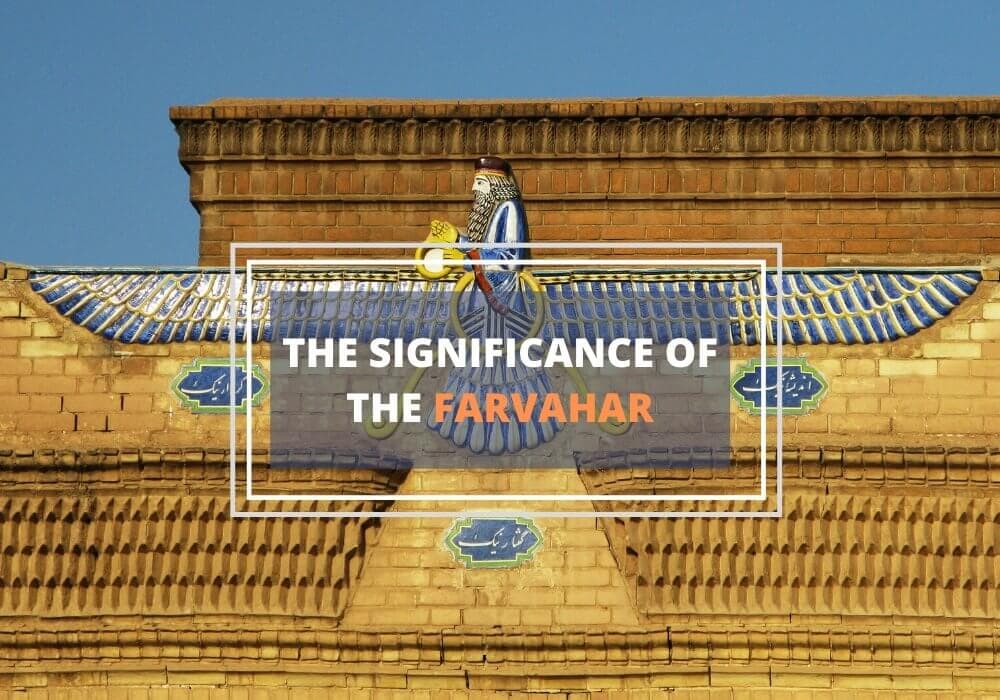
Table of Contents
The Faravahar, also known as Farr-e Kiyani or Forouhar, is one of the best-known ancient symbols of Zoroastrianism. The symbol, featuring an old man, with wings, a crown, and a ring, has existed since ancient times and remains one of the most important national and cultural symbols of Persia (modern day Iran). In this article, we’ll be taking a quick look at the symbol of the Faravahar, its meaning and the various interpretations of its symbolism.
What is the Faravahar?
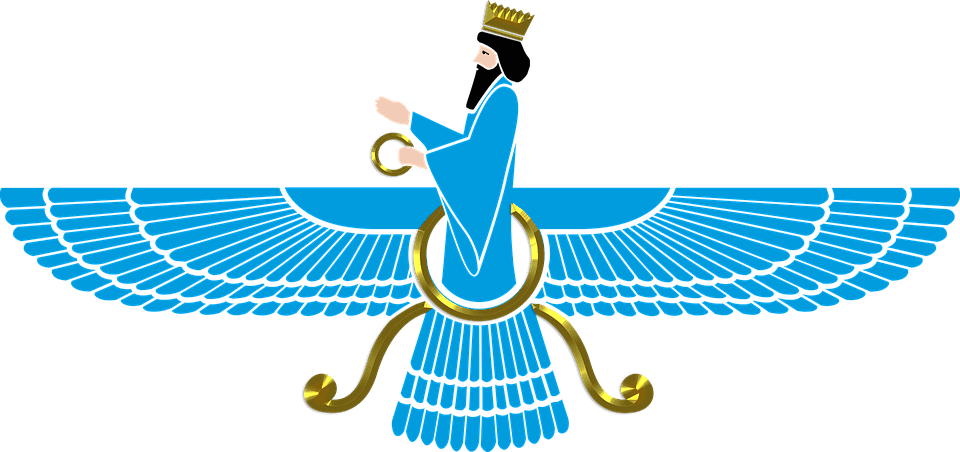
The Faravahar is a symbol that’s comprised of a sun disk with wings spread out on either side, and a seated male figure at the center, most commonly seen in ancient Persian art and architecture. It’s a highly detailed and intricate representation of the winged sun disk, one of the most ancient symbols found in art, architecture and seals from ancient civilizations such as Egypt, Sumer, Judah and Assyria.
Although the Faravahar is a Persian symbol, it’s neither Zoroastrian nor Persian in origin. In fact, it’s believed to have originated in Mesopotamia as a depiction of Ashur, a winged deity, that may have symbolized divine kingship.
The Farvahar first appeared in Persia during the Achaemenid Persian Empire. After the Achaemenian dynasty, the use of the Faravahar in Persian architecture and art declined, regaining popularity once again in the modern era.
The Faravahar symbol can still be seen on many ancient Iranian standing sites like the Yazd Atashkadeh, the Tomb of Ferdowsi, and Persepolis. It can also be seen on older school and bank buildings in Iran which are carefully preserved to this day.
Faravahar Meaning
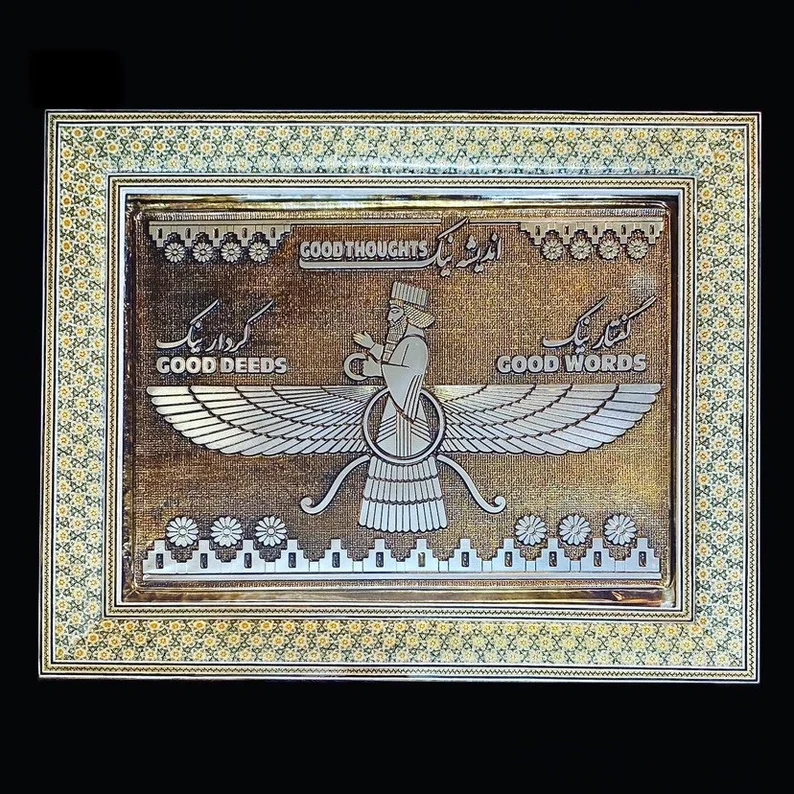
Although the Faravahar was famous in ancient Persia, what it meant to the Persians is still unknown and remains a mystery to this day.
According to Zoroaster, a great Iranian philosopher and the founder of Zoroastrianism, the Faravahar represents his principles of ‘Good Thoughts, Good Words and Good Deeds’. It’s also said to represent a Fravashi (a guardian angel) which is what gave it its name.
The symbol also represents life after death. Simply put, the message given by the Faravahar is that if you behave well and lead a humble life here on Earth, you will be compensated for it with a good life after death.
Each element of the Faravahar has its own special meaning, so let’s take a look at the significance of this symbol in a little more detail.
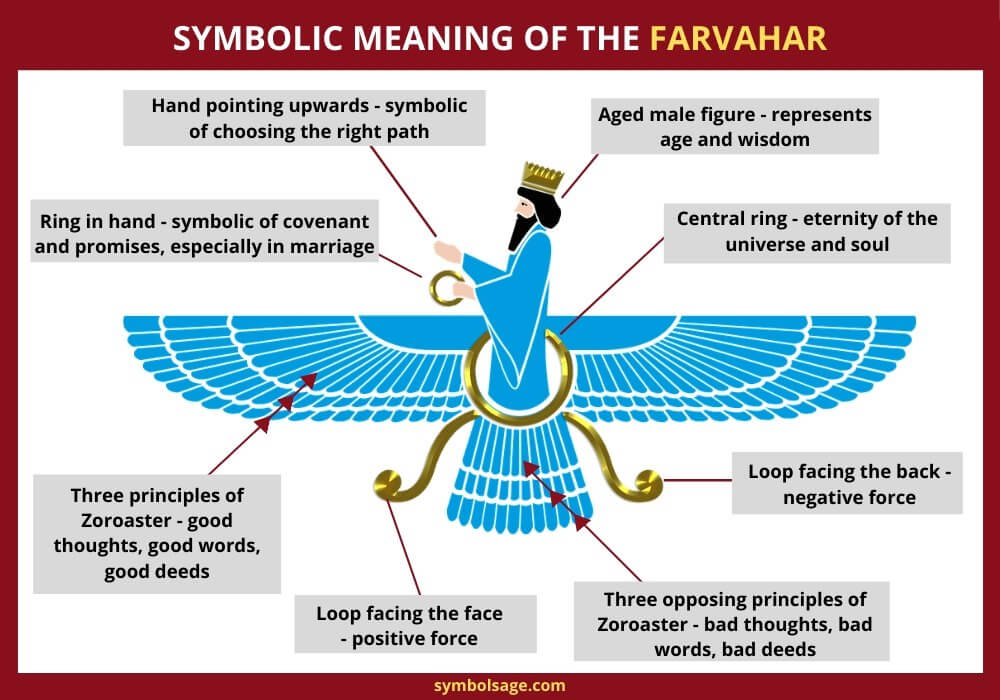
- Wisdom of Age: the male figure in the Faravahar is said to be that of an old man who reminds one that the elderly can be good guides. It’s also a reminder to heed the words of the wise and experienced.
- Three Principles of Zoroaster: there are two wings spread apart, one on each side of the man in the center which are divided into three segments. These indicate the three principles of Zartosht: good reflections, good words and good deeds.
- Three Opposing Principles: the lower part of the symbol (similar to a feathered tail) is also divided into three separate parts. Their meaning is completely opposite to that of the wings, representing ‘bad reflections, bad words and bad deeds’. It suggests avoiding bad choices and staying away from the wrong path which can bring misfortune and misery to humans
- Positive and Negative Forces: there are two loops on either side of the Faravahar, which are representative of positive forces and negative forces. The loop representing positive forces is directed toward the face of the figure and the latter is at the back to show that we must keep looking forward to the good things in life and turn our backs on the bad.
- Eternity of Universe and Soul: the central circle around the old man shows that the spirit is endless and the universal and soul are eternal. Since it’s a circle, it clearly shows that there is no beginning or end. The central ring also tells us that the consequences of a man’s action will come back to him in this world and that it is the soul of the righteous that will enjoy the reward in the other world.
- Choosing the Right Path: one of the old man’s hands on the Faravahar is pointing upwards to show that there’s only one direction to choose in life which is the forward path.
- Faithfulness and Loyalty: on the other hand is a ring known as a ring of promise which shows the respect for promises. Some interpreters say that it’s a ring of covenant that’s used in wedding ceremonies to represent faithfulness and loyalty.
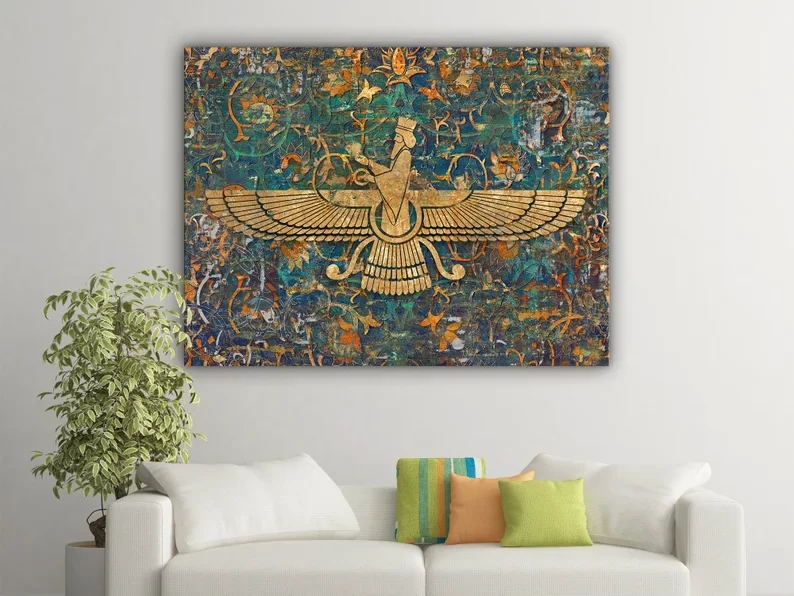
Although there are several different interpretations of the individual elements of the Faravahar, all of these are fairly new and came into existence after the 20th century. Therefore, we may never know what the symbol represented exactly in ancient times.
There is still a great debate about what the symbol actually means since what it represented in the minds of those who adapted it from Mesopotamian and Egyptian reliefs is still unclear.
The Faravahar in Use Today
The Faravahar is a popular symbol for many jewelry designs and tattoos as well as clothing items. It’s used by people all over the world who take it with them as a token of good luck. Below is a list of the editor’s top picks featuring the Farvahar symbol.
For Zoroastrians, it’s a special reminder of their life’s purpose: to live well and behave well in a way that helps spiritual progression of one’s soul. Since the symbol is interpreted in many ways, it calls to a wide range of people who come from various religious beliefs and cultures.
In Brief
The Faravahar continues to be a popular symbol among modern day Iranians and Zoroastrians. While the actual meaning of the symbol may be difficult to decipher, it remains a beautiful and meaning symbol open to interpretation.











